Inmarsat launch initiates a technology refresh
- Published
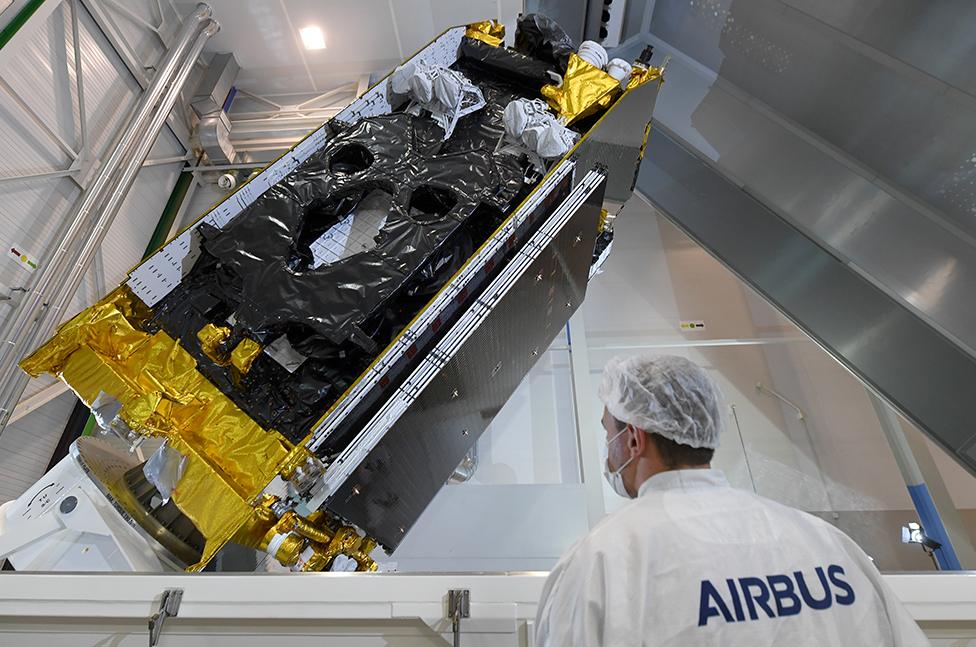
The I6 series is being built in the UK and France
Inmarsat, the UK's biggest space company, began a major refresh of its network on Wednesday.
The London-based operator put up one of the largest and most sophisticated telecommunications spacecraft ever built.
Called the I6-F1, the new platform will serve Inmarsat's many on-the-move customers - from ships and planes to armed forces and broadcasters.
The satellite was taken to orbit by a Mitsubishi H-IIA rocket from Japan.
Lift-off from the Tanegashima spaceport occurred at 00:32 local time, Thursday (15:32 GMT, Wednesday).
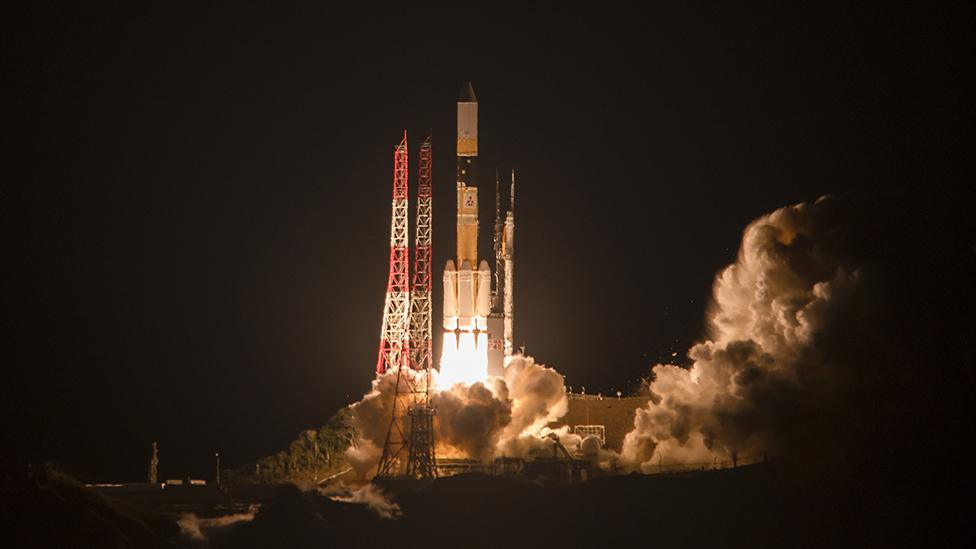
The HII-A rocket leaves the pad for the flight to orbit
This is an important moment for Inmarsat as it looks to future-proof its business against a coming wave of new communications constellations.
The I6-F1 will start the overhaul of that part of its satellite fleet which transmits around the globe in L-band.
This narrowband radio frequency is primarily used for voice calls and messaging. It has been a mainstay of the company from its inception in 1979 as a non-governmental organisation monitoring distress calls at sea.
Inmarsat's existing L-band spacecraft, codenamed the I4s, are now more than 10 years old, meaning the technology onboard them is no longer state of the art.
"From I6-F1, we'll get something close to four times the capacity that can be put into hot zones around the world," chief technology officer Peter Hadinger told BBC News.
"The spacecraft is intended to ensure that we have continuity of our L-band constellation up to 2040.
"Our customers buy L-band because it's a super-reliable service and they're looking to the long-term availability of this service."
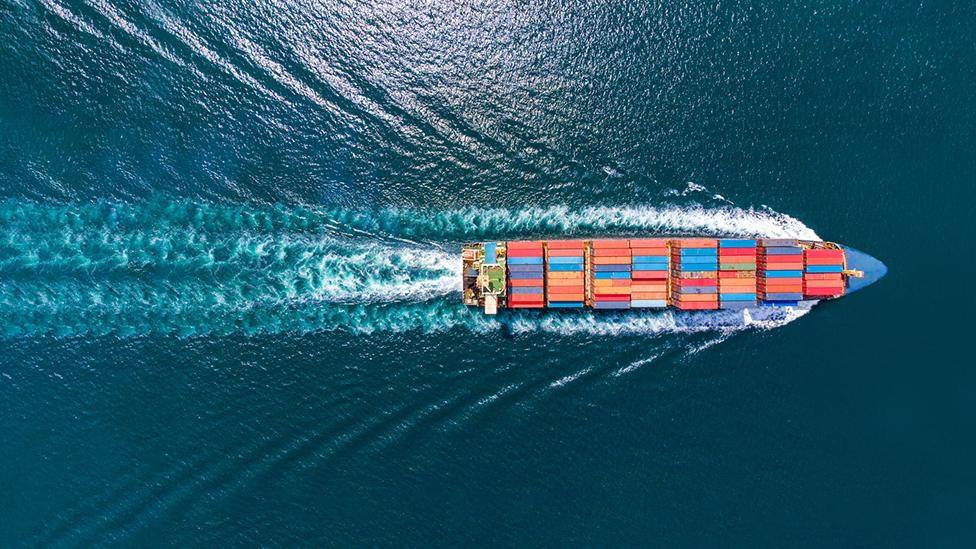
A big user of Inmarsat services is the global maritime industry
Although L-band provides relatively slow-speed connectivity, it has a growing demand for so-called "internet of things" applications. Such applications include remote assets - everything from shipping containers to bulldozers - making regular reports back to base of their operational status.
"Wider pipe" requirements (web surfing, video) are shifting to the higher-frequency Ka-band, and the I6 platform will carry transponders for this frequency as well.
This will make the new satellite a complement to Inmarsat's dedicated Ka constellation, which the company calls Global Xpress.
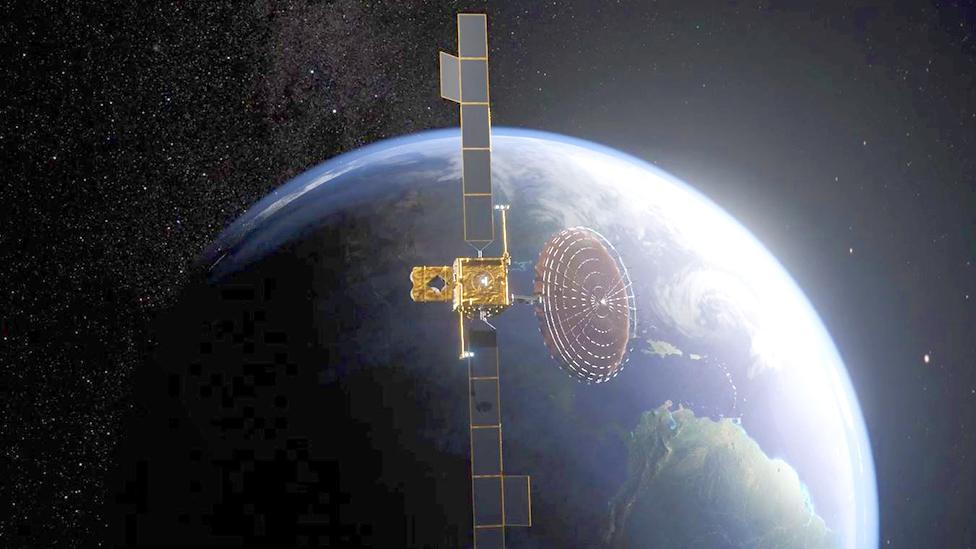
Artwork: Wingtip to wingtip, the solar arrays measure 47m (154ft)
The dual role means I6-F1 is something of a "beast", says Edwina Paisley, Inmarsat's senior director of satellite programmes.
"We've absolutely squeezed as much payload as we possibly can into this mission with both the L-band and the Ka-band, to serve all our markets.
"In terms of complexity, no-one has ever tried to build something with this much payload and at such an exquisite level."
The I6 manufacturer is Airbus, which has used its Stevenage and Portsmouth, UK, factories, along with its Toulouse, France, facility. An F2 model is well advanced and will be launched next year.
Wednesday's launch has put the 5.5-tonne F1 satellite on a path to reach an orbital position some 36,000km above the Indian Ocean, to serve Africa, Asia and Australia.
Key events in the coming days include the unfurling of the spacecraft's giant solar arrays, which measure 47m from wingtip to wingtip; and the deployment of its 9m-wide L-band reflector.
Both activities need to pass off flawlessly.
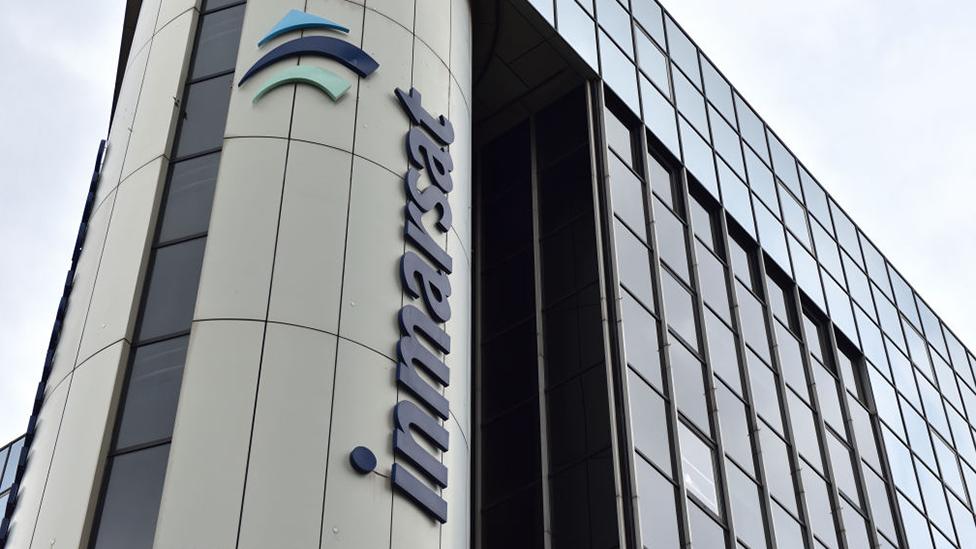
The London company is being purchased by Viasat of the US
Inmarsat is in the process of being acquired by the US Viasat company, who are probably best known for satellite home broadband delivery in the American market. They also provide wifi on planes, a service that overlaps neatly with Inmarsat's interests.
The British government has yet to give its approval to a purchase that would see the country's most significant space player transferred fully into foreign ownership. But whatever the outcome, Inmarsat will be pressing ahead with ambitious development plans.
It has a range of new satellites on order beyond just the I6 series. There are two spacecraft coming that will fly elongated orbits so that they spend a lot of time over the Arctic. With the loss of sea-ice, the northern polar region is opening up to more ships, all of which need connectivity.
The Inmarsat technology roadmap, dubbed Orchestra, also calls for a network of satellites in low orbit, just a few hundred kilometres in altitude.
The company believes the constellation will help maintain its competitiveness in the face of other systems, such as Starlink and OneWeb, that are making big investments in this area.
